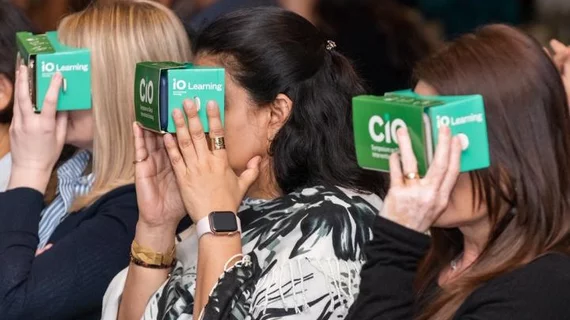Doctor uses virtual reality to speed up radiology training, availability of new treatment
A University of Virginia Health System physician is using virtual reality to help train radiologists in the hopes of speeding up the availability of new treatments.
Ziv Haskal, MD, an interventional radiologist with UVA, has created an 11-minute virtual reality experience for docs, detailing a less-invasive treatment for thyroid patients. It’s all part of a larger effort to create a VR studio at the Charlottesville-based institution.
Haskal recently unveiled the VR tool at the Symposium on Clinical Interventional Oncology in Miami, which concluded on Sunday, Oct. 13; about 200 conference attendees got to test out the technology (photo above).
UVA is also testing out tech to ease patients’ anxiety before interventional radiology procedures and is excited about its many uses in interventional practice.
“This technology has incredible potential to improve care, whether it is by better training doctors to perform procedures or helping patients know what to expect when they arrive at the hospital,” Haskal said in a UVA announcement.
The new VR experience details a less-invasive thyroid treatment procedure called “thermal ablation,” which uses heat to shrink common, non-cancerous lumps. UVA noted that this procedure produces less scarring and disfigurement than normal surgery, along with a shorter recovery time. It is more common outside of the U.S. and is not normally covered by health insurance here.
But Haskal and UVA hope that VR, coupled with other educational materials, will make thermal ablation of thyroid lumps more widespread in the states. Providing a 360-degree view of what to expect beforehand should instill confidence in radiologists who are unfamiliar with emerging treatment methods, he noted.
“The VR experience uniquely places the viewer into the room right next to the operator,” Haskal said in the announcement. “I want interventional radiologists to say, ‘I can see myself doing this.’ Patients already come from across the country for thyroid ablation. UVA can also be the training center for physicians to learn how to do this procedure.”

